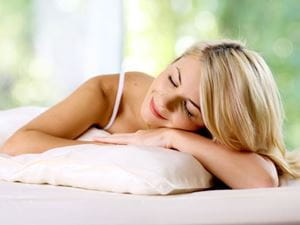
This material was reproduced by permission of Quest Books, the imprint of The Theosophical Publishing House (www.questbooks.net) from Practical Centering: Exercises to Energize Your Chakras for Relaxation, Vitality, and Health by Larkin Barnett, © 2012 by Larkin Barnett. Excerpt from Chapter 4: Practice the Rocking Motion for the Seven Rocking Massage Exercises
Breathing for the Rocking Massage
Yoga teaches that your breath or “life force” runs through each of your “energy centers” or chakras. The most important element of The Rocking Massage is deep relaxation breathing. This aids in muscle relaxation and the fluid rocking motion. If you hold your breath or breathe shallowly the muscles tighten. Deep relaxation breathing involves long, slow, even inhalations and exhalations through your nose.
Preparation for the Rocking Massage
- This time is just for you. Work out away from outside distractions. You may want to play soft music or light a candle. You will need a slightly cushioned mat, a blanket, or a towel placed on a carpet. A yoga sticky mat will not work. Your body cannot slide along it. It may be necessary to slightly elevate your head. Place a folded towel under your head. Keep the towel flat. The back of your head needs to gently slide during the rocking motion.
Starting Position for the Rocking Massage Exercises:
To start, lie on your back down on the mat with knees bent, feet flat, and legs hip-width apart, arms resting across your chest. Place your heels about 12 inches away from your hips.
Discover that the actual motion is a continuous, slow rhythmic action. The body rocks backward and automatically rolls forward in response. The rhythm seamlessly repeats itself without pausing. Breathe slowly and smoothly as you progress through the movements.
Start Practicing the Rocking Massage Motion:
- Keep your feet in place and initiate the rock and roll motion of your body from a gentle push of your feet against the floor. The motion starts from the heels and reverberates into your pelvic floor. This is called your “heel/sit-bone connection.” Your sit bones are the bones located at the base of your pelvis. (You can feel them when you rock side to side in a sitting position.)
- Your entire body moves as a unit, backwards and forward, with no pauses. These are tiny ranges of motion weight shifts of the entire body. Your body moves approximately 1-2 inches backward and 1-2 inches forward. This is a sliding motion of your body along the floor produced by the rocking.
- Keep your lower back and abdominal area relaxed. Your lower back does not press against the floor. That would tighten your lower back. This is the opposite intention. The small rocking motion allows your lower back to gently lengthen (when the body moves backward) and “naturally arch” (when the body slides forward). Gradually allow all of the tension within your back muscles to dissipate.
- Relax your neck, jaw area, and directly behind your ears. The head will gently slide. Your chin moves up and down as a natural reaction to the slight push from your feet.
- Drape your arms across your body. Relax your arm and hand muscles by allowing the weight of them to give into gravity. You are in the “zone” when the back of your shoulder girdle and head slide along the floor.
Try not to make the gentle rock happen. Allow the rocking motion to sequence freely through your whole body. Your entire body naturally knows what to do — if you relax each part.


